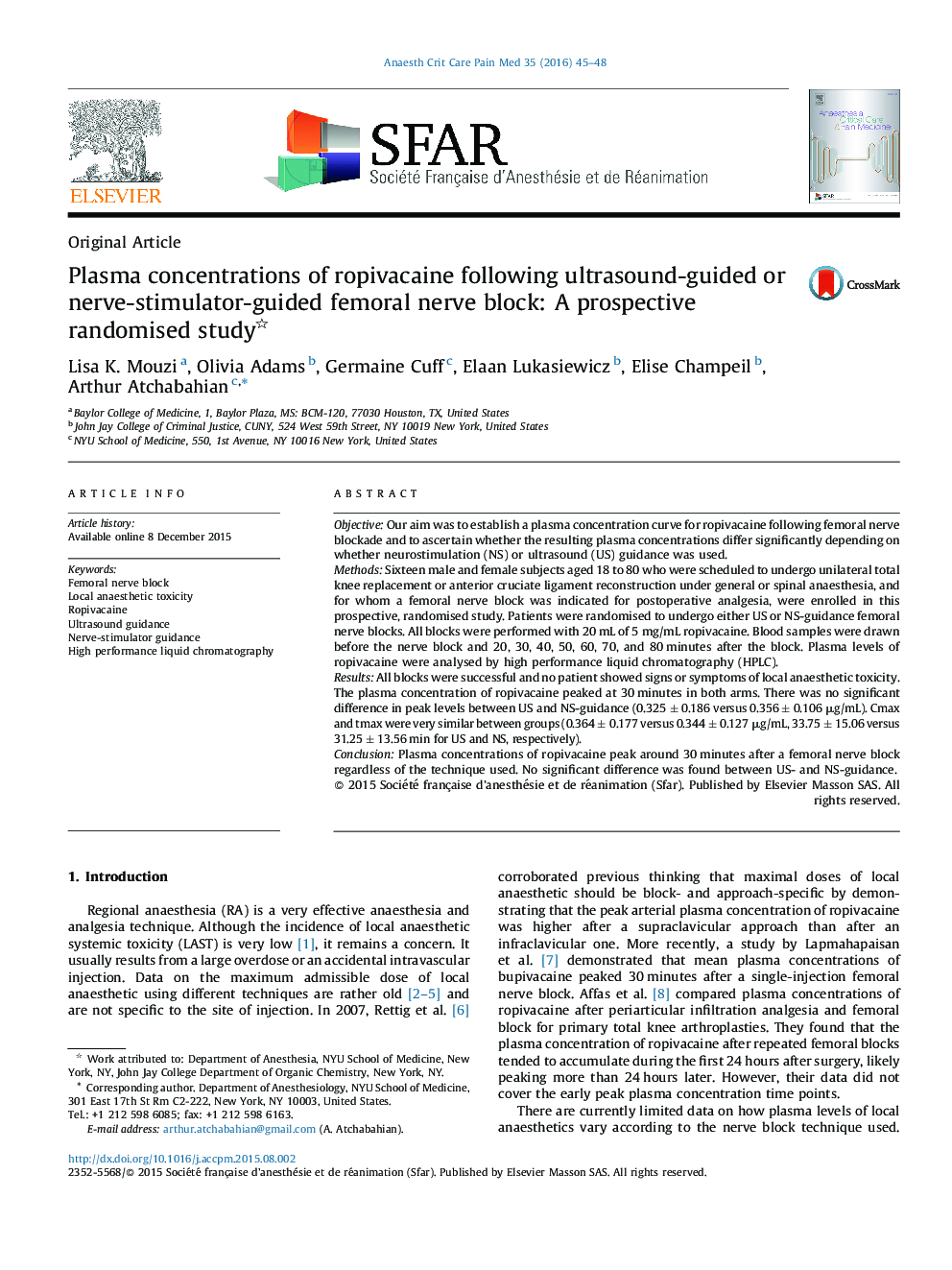| Article ID | Journal | Published Year | Pages | File Type |
|---|---|---|---|---|
| 2741896 | Anaesthesia Critical Care & Pain Medicine | 2016 | 4 Pages |
ObjectiveOur aim was to establish a plasma concentration curve for ropivacaine following femoral nerve blockade and to ascertain whether the resulting plasma concentrations differ significantly depending on whether neurostimulation (NS) or ultrasound (US) guidance was used.MethodsSixteen male and female subjects aged 18 to 80 who were scheduled to undergo unilateral total knee replacement or anterior cruciate ligament reconstruction under general or spinal anaesthesia, and for whom a femoral nerve block was indicated for postoperative analgesia, were enrolled in this prospective, randomised study. Patients were randomised to undergo either US or NS-guidance femoral nerve blocks. All blocks were performed with 20 mL of 5 mg/mL ropivacaine. Blood samples were drawn before the nerve block and 20, 30, 40, 50, 60, 70, and 80 minutes after the block. Plasma levels of ropivacaine were analysed by high performance liquid chromatography (HPLC).ResultsAll blocks were successful and no patient showed signs or symptoms of local anaesthetic toxicity. The plasma concentration of ropivacaine peaked at 30 minutes in both arms. There was no significant difference in peak levels between US and NS-guidance (0.325 ± 0.186 versus 0.356 ± 0.106 μg/mL). Cmax and tmax were very similar between groups (0.364 ± 0.177 versus 0.344 ± 0.127 μg/mL, 33.75 ± 15.06 versus 31.25 ± 13.56 min for US and NS, respectively).ConclusionPlasma concentrations of ropivacaine peak around 30 minutes after a femoral nerve block regardless of the technique used. No significant difference was found between US- and NS-guidance.
